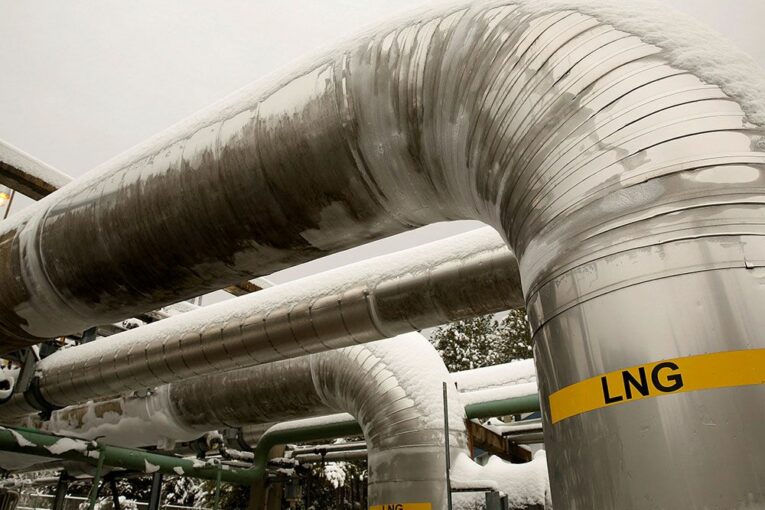
By David Rosenberg and Brendan Livingstone
The Russia-Ukraine war is bringing to the forefront the importance of energy security, which has been neglected in recent years as supply exceeded demand and governments felt increased political pressure to reduce our reliance on fossil fuels.
However, with households confronting much steeper energy bills, which are at risk of rising further as winter approaches, the focus has shifted back towards providing reliable energy solutions at favourable costs. Liquefied natural gas (LNG), which involves cooling natural gas to a liquid state, is an attractive solution because it allows for an efficient way for transportation and storage — to areas not endowed with natural gas reserves — and it is relatively clean in terms of production and combustion.
We believe investors should look to have exposure to LNG in a portfolio
Over the next decade plus, we see strong growth in LNG — and all that goes with it — and so we believe investors will benefit from seeking out exposure.
LNG is natural gas that has been converted to a liquid by cooling it at -1,620 C (-2,600 F). In its liquid state, natural gas is about 600 times smaller than when it is in a gaseous state, making it substantially easier to store. In addition, the liquefaction process allows for the transportation of natural gas to places where natural gas pipelines are not feasible or do not exist.
Export facilities receive natural gas from producers by pipeline and then liquefy it for transport via LNG ships. Once the tankers reach their destination, LNG is offloaded at import terminals, stored in cryogenic storage tanks and then returned to a gaseous state. After which, natural gas is transported via pipelines to customers.
In recent years, the United States has become a major player in LNG, increasing its export capacity to about 10.78 billion cubic feet per day at the end of 2021 from less than one bcf/d per day in 2015. By the end of 2022, the U.S. is poised to become the largest LNG exporter in the world. About half of U.S. LNG exports go to five countries: South Korea (13 per cent), China (13 per cent), Japan (10 per cent), Brazil (9 per cent) and Spain (6 per cent).
LNG produces 40 per cent less carbon dioxide than coal and 30 per cent less than oil, making it among the cleanest fossil fuels. In addition, it drastically reduces emissions of nitrogen oxide, and it emits almost zero sulphur and particulate matter. As a result, due to its relatively favourable emissions profile — and, critically, its reliability as a fuel source — we see LNG as a great complement to renewable energy as governments work towards a reduction in greenhouse gas emissions.
Some pundits have labeled LNG as a “transition fuel,” but this understates its role in the energy mix of the future since it is a great backup for the natural intermittency of renewables such as wind and solar.
A McKinsey & Co. report — the Global Gas Outlook to 2050 — estimates LNG demand will grow by 3.4 per cent per annum until 2035, requiring approximately 100 million metric tons of additional capacity. While it believes that demand will then slow substantially — to growth of 0.5 per cent between 2035 and 2050 — this will still necessitate more than 200 million metric tons of new supply.
Most of this increase is expected to come from the United States, with smaller contributions from Canada, Russia, East Africa and potentially the Middle East.
Against a backdrop of strong growth over the next decade or so, especially in the U.S., we believe investors should look to have exposure to LNG in a portfolio. Renewable energy undoubtedly has the greatest future growth potential — as governments strive for “net zero” by 2050 (193 parties have signed onto the Paris Agreement) — but the reliability of LNG, combined with the lower associated emissions (relative to other fossil fuels), means governments can concurrently improve energy security while simultaneously reducing pollution.
The importance of having LNG exposure, especially during energy crises, has been on full display this year. Bloomberg Intelligence’s LNG Liquefaction Peer Group — an equally weighted equity index of some of the major LNG producers globally — is up 25 per cent this year as of the end of August, versus the 17 per cent decline for the S&P 500.
Beyond its positive future growth profile, LNG stocks also have the benefit of being attractively priced. The group trades at an EV-to-EBITDA ratio of 4.7x, well below its 10-year average (8.6x), and considerably less than the S&P 500 (13.5x). Other ways to play the LNG theme are through companies involved in the regasification process, transportation (tankers) and infrastructure construction.
You can read more of the news on source
